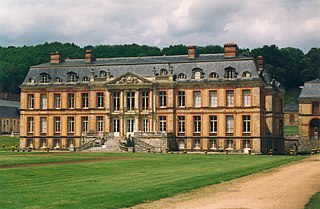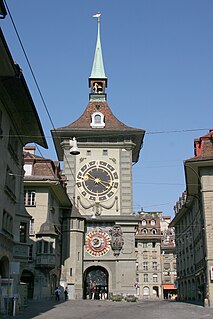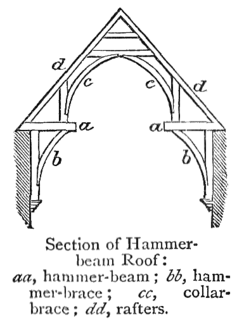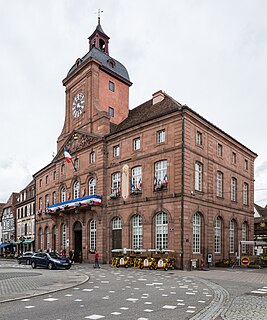
A defensive wall is a fortification usually used to protect a city, town or other settlement from potential aggressors. The walls can range from simple palisades or earthworks to extensive military fortifications with towers, bastions and gates for access to the city. From ancient to modern times, they were used to enclose settlements. Generally, these are referred to as city walls or town walls, although there were also walls, such as the Great Wall of China, Walls of Benin, Hadrian's Wall, Anastasian Wall, and the Atlantic Wall, which extended far beyond the borders of a city and were used to enclose regions or mark territorial boundaries. In mountainous terrain, defensive walls such as letzis were used in combination with castles to seal valleys from potential attack. Beyond their defensive utility, many walls also had important symbolic functions – representing the status and independence of the communities they embraced.

A spire is a tall, slender, pointed structure on top of a roof or tower, especially at the summit of church steeples. A spire may have a square, circular, or polygonal plan, with a roughly conical or pyramidal shape. Spires are typically built of stonework or brickwork, or else of timber structure with metal cladding, ceramic tiling, shingles, or slates on the exterior.

A mansard or mansard roof is a four-sided gambrel-style hip roof characterised by two slopes on each of its sides with the lower slope, punctured by dormer windows, at a steeper angle than the upper. The steep roof with windows creates an additional floor of habitable space, and reduces the overall height of the roof for a given number of habitable storeys. The upper slope of the roof may not be visible from street level when viewed from close proximity to the building.

In architecture, a turret is a small tower that projects vertically from the wall of a building such as a medieval castle. Turrets were used to provide a projecting defensive position allowing covering fire to the adjacent wall in the days of military fortification. As their military use faded, turrets were used for decorative purposes, as in the Scottish baronial style.

Clock towers are a specific type of structure which house a turret clock and have one or more clock faces on the upper exterior walls. Many clock towers are freestanding structures but they can also adjoin or be located on top of another building. Some other buildings also have clock faces on their exterior but these structures serve other main functions.

The Zytglogge is a landmark medieval tower in Bern, Switzerland. Built in the early 13th century, it has served the city as guard tower, prison, clock tower, centre of urban life and civic memorial.

A hammerbeam roof is a decorative, open timber roof truss typical of English Gothic architecture and has been called "...the most spectacular endeavour of the English Medieval carpenter". They are traditionally timber framed, using short beams projecting from the wall on which the rafters land, essentially a tie beam which has the middle cut out. These short beams are called hammer-beams and give this truss its name. A hammerbeam roof can have a single, double or false hammerbeam truss.
This page is a glossary of architecture.

The Abraj Al-Bait is a government-owned complex of seven skyscraper hotels in Mecca, Saudi Arabia. These towers are a part of the King Abdulaziz Endowment Project that aims to modernize the city in catering to its pilgrims. The central hotel tower, the Makkah Clock Royal Tower, is the fourth-tallest building and sixth-tallest freestanding structure in the world. The clock tower contains the Clock Tower Museum that occupies the top four floors of the tower.

A turret clock or tower clock is a clock designed to be mounted high in the wall of a building, usually in a clock tower, in public buildings such as churches, university buildings, and town halls. As a public amenity to enable the community to tell the time, it has a large face visible from far away, and often a striking mechanism which rings bells upon the hours.

Helen's Tower is a 19th-century folly and lookout tower near Bangor, County Down, Northern Ireland. It was built by the 5th Baron of Dufferin and Claneboye and named for his mother, Helen. He intended it as a shrine for poems, first of all a poem by his mother and then other poems that he solicited from famous poets over the years. Tennyson's Helen's Tower is the best known of them. The tower is a fine example of Scottish Baronial architecture. Helen's Tower inspired the design of the Ulster Tower, a war memorial at Thiepval, France.

Rajarani Temple is an 11th-century Hindu temple located in Bhubaneswar, the capital city of Odisha, India.

A turret was a small watch tower, incorporated into the curtain wall of Hadrian's Wall. The turrets were normally spaced at intervals of one third of a Roman mile between Milecastles, giving two Turrets between each Milecastle.

The APA Building was a Victorian "skyscraper" in Melbourne, Victoria, Australia; at 12 storeys and 53m to the tip of its corner spire, it was the tallest commercial building in Australia at the time of its construction in 1888–9, later reputed (erroneously) to have been the world's tallest at the time.

Predigerkirche is one of the four main churches of the old town of Zürich, Switzerland, besides Fraumünster, Grossmünster and St. Peter. First built in 1231 AD as a Romanesque church of the then Dominican Predigerkloster, the Basilica was converted in the first half of the 14th century, the choir between 1308 and 1350 rebuilt, and a for that time unusual high bell tower was built, regarded as the highest Gothic edifice in Zürich.

The Clock Tower is a Grade I listed belfry in St Albans, England which was constructed between 1403 and 1412, believed to have been completed in 1405. It has been claimed to be the only remaining medieval town belfry in England. Its construction has been seen as a protest against the power of the local abbey to regulate time-keeping in the town.

The Town hall of Wissembourg is a Baroque city hall in Wissembourg, a small town at the northern edge of the Bas-Rhin department of France, close to the German state of Rhineland-Palatinate. It is classified as a Monument historique by the French Ministry of Culture since 1932.

The Dreikönigskirche is a Lutheran church located in the Innere Neustadt of Dresden, Germany. It is the centre of a parish, and a community venue called Haus der Kirche. The church is a listed cultural monument of Dresden.






















